Spark interest. Build credibility. Cultivate community.
 My last post shared insights for choosing the right social media platform for your brand and the benefits of tailoring content to the personality of each platform.
My last post shared insights for choosing the right social media platform for your brand and the benefits of tailoring content to the personality of each platform.
In this post, I will take you through specific examples of brands in the active lifestyle/outdoors arena that are successfully using select social media platforms to grow engagement and online revenue.
After zeroing in on the right platform for your brand and building an initial presence, be careful not to overwhelm followers with posts and direct messages or you’ll risk alienating them before you have a chance to connect. Focus on being helpful, informative and interesting. Your target market will naturally start congregating.
Picture a group of runners congregating after a race, chatting about their times and training strategies. Their only connection is the recently completed course and that becomes a chance to trade experiences and advice. One runner in the group starts talking about her new GPS running watch and how it makes training more fun. Others slide in for a closer look or eavesdrop from the edge of the group.
That’s what happens virtually on social media platforms. Like the runners, followers come across posts that are relevant to their lives and they take action in the form of likes, shares, comments, eCommerce transactions or offline purchases. It’s important for companies to cultivate a gathering place for those interested in activities and topics related to the brand. The company shares valuable information and in return, earns the opportunity to promote their products or services. Over time this develops credibility and trust, which leads to repeat visits, increased engagement and eventually more customers.
So then, which active lifestyle companies are doing social media right, and what exactly are they doing? Below is a list of six companies that are making the most of various social media platforms by tailoring content, messaging and offerings to specific audiences.
Arc’teryx on Google+
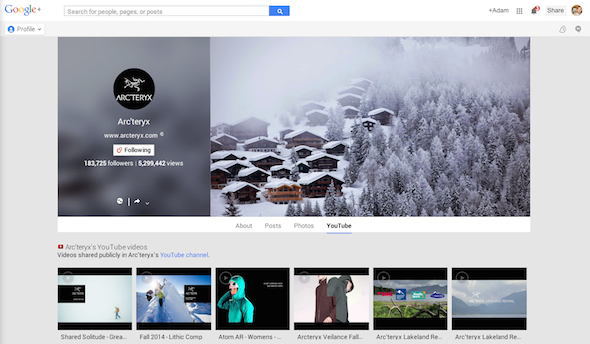
With over 175K followers, Arc’teryx is one of the most popular outdoor bands on Google+.
Arc’teryx concentrates much of its marketing efforts on awe-inspiring video content featuring their gear being tested by athletes in harsh conditions and remote locations. The videos posted on Arc’teryx’s Google+ profile page are linked directly to YouTube or Vimeo, effectively converting their profile page into a branded video portal.
Visitors who click on a YouTube video from Google+ are taken to YouTube and the interactive system it facilitates. Comments made on Google+ carry over to the video page. Despite YouTube not being a true social network, the sharing and interactions it facilitates are effective for growing a video’s view count and overall reach.
Mission Workshop on Tumblr
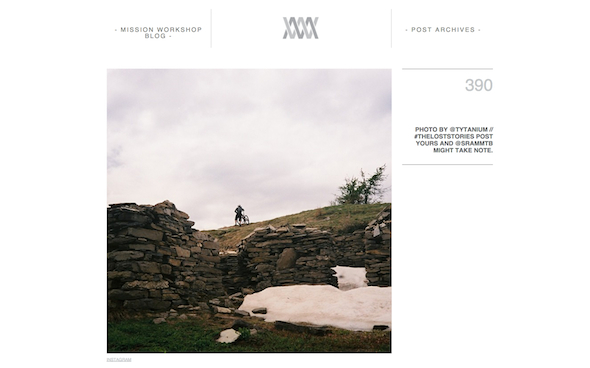
An image-centric platform with a clean feel, Tumblr appeals to photographers and self-expressionists. Mission Workshop has built their blogging strategy around the way Tumblr users interact with image content.
Using high-resolution imagery from urban and trail scenes, Mission Workshop tells the story of their products, material selection, functional design and commitment to North American manufacturing through a Tumblr blog.
Text is used sparingly, letting images do the bulk of the storytelling. Links to featured products are subtly included where relevant, creating a bridge back to their eComm site. Mission Workshop also makes effective use of #hashtags so visitors can follow related topics.
Roots Rated on Pinterest
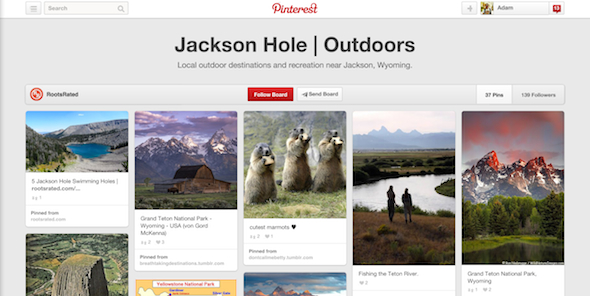
Roots Rated is a content site that provides both locals and visitors with an authentic perspective of a city’s outdoor activities, hangouts and overall identity. Roots Rated uses Pinterest to spread the reach of their articles to attract loyal site users.
Using high quality images of landscapes, unique locations, people enjoying the outdoors and even food, Roots Rated’s Pinterest boards have resonated with active travelers planning their next adventure or vacation.
Visitors pin images of destinations they’d like to visit, all of which link back to RootsRated.com. As a result of their boards growing popularity, Pinterest has become a significant source of new traffic for Roots Rated.
GU Energy Labs on Twitter
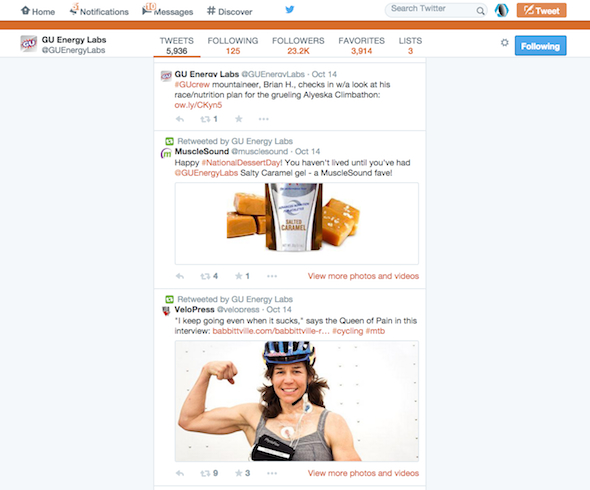
Aimed at endurance athletes, the GU Energy Labs Twitter page background is clean, with a focus on event-related content. Nearly half of their page posts are from followers.
GU’s motto sums up their approach: “When our athletes succeed, so do we.” The old premise that people look first for their name in any story still rings true. Recognizing recreational racers along with pros competing in endurance events encourages a wide range of followers to engage with GU’s Twitter feed on a regular basis.
GU also makes efficient use of hashtags, callouts and congratulations to make everyone feel a part of their Twitter community. Using promotions, partnerships and especially athlete recognition, GU Energy Labs has put together a solid base of followers, who actively post photos, tweet and retweet event-related content.
Poler Stuff on Instagram
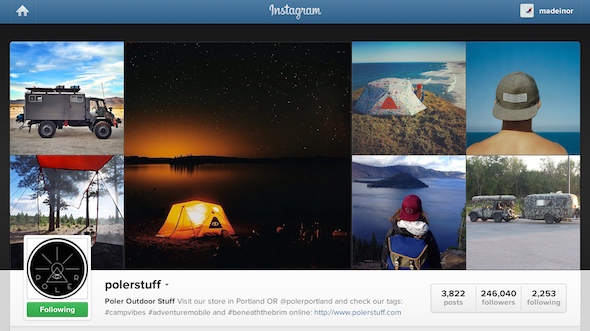
This Portland-based outdoor gear company, has quickly become an influential voice on Instagram. Poler has struck a strong chord among urban millennials, the most active demographic on this photo-centric social network.
Identifying who is most likely to buy your products is essential for making the most of your social media budget. Equally important is discovering who isn’t interested. Poler Stuff has done a stellar of job pinpointing both. Their followers, and customers, enjoy hiking, car camping, the road less traveled and the vehicles that get them there.
Poler’s customer is not interested in the more technical aspects of mountaineering, climbing or skiing, nor the high-priced technical gear traditionally associated with these activities.
Poler Stuff created popular hashtags including #campvibes #adventuremobile and #beneaththebrim. These sparked a massive amount of user-generated content that in turn spurred web traffic growth and sales of its products.
Strava on Facebook
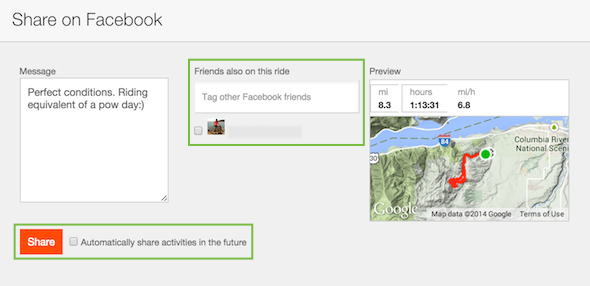
Strava is an online community made up of runners and cyclists who are passionate about fitness. In addition to running and cycling, Strava users love to connect with like-minded athletes to share experiences and compete virtually via mobile and the online apps.
All Strava’s apps, websites and plugins are closely intertwined with Facebook, enabling users to quickly share their latest workout. Strava also uses Facebook’s social sharing capabilities to promote user challenges and sponsored events. Engagement is encouraged through meaningful questions, inspirational photos and direct messages.
Strava has used the crux of its business – sharing and competing with friends via technology and extended that concept to sharing and building community on social media to grow its user active base.
What do these brands have in common?
Each one is focused on effective brand promotion on the social media platform where the majority of its customers already gather. Each brand uses photos and content to communicate its story in an appealing way that encourages interaction and repeat visits. In each case, the brand’s efforts are specifically geared to the strengths of the platform.
As mentioned in the first post, a brand doesn’t have to use every social media platform to be successful. In fact, it’s more effective for brands to focus on the platforms that reach and communicate with their target customer(s). Play to the strengths of each social media platform with relevant, interactive content in an authentic way and followers, along with revenue will grow.
